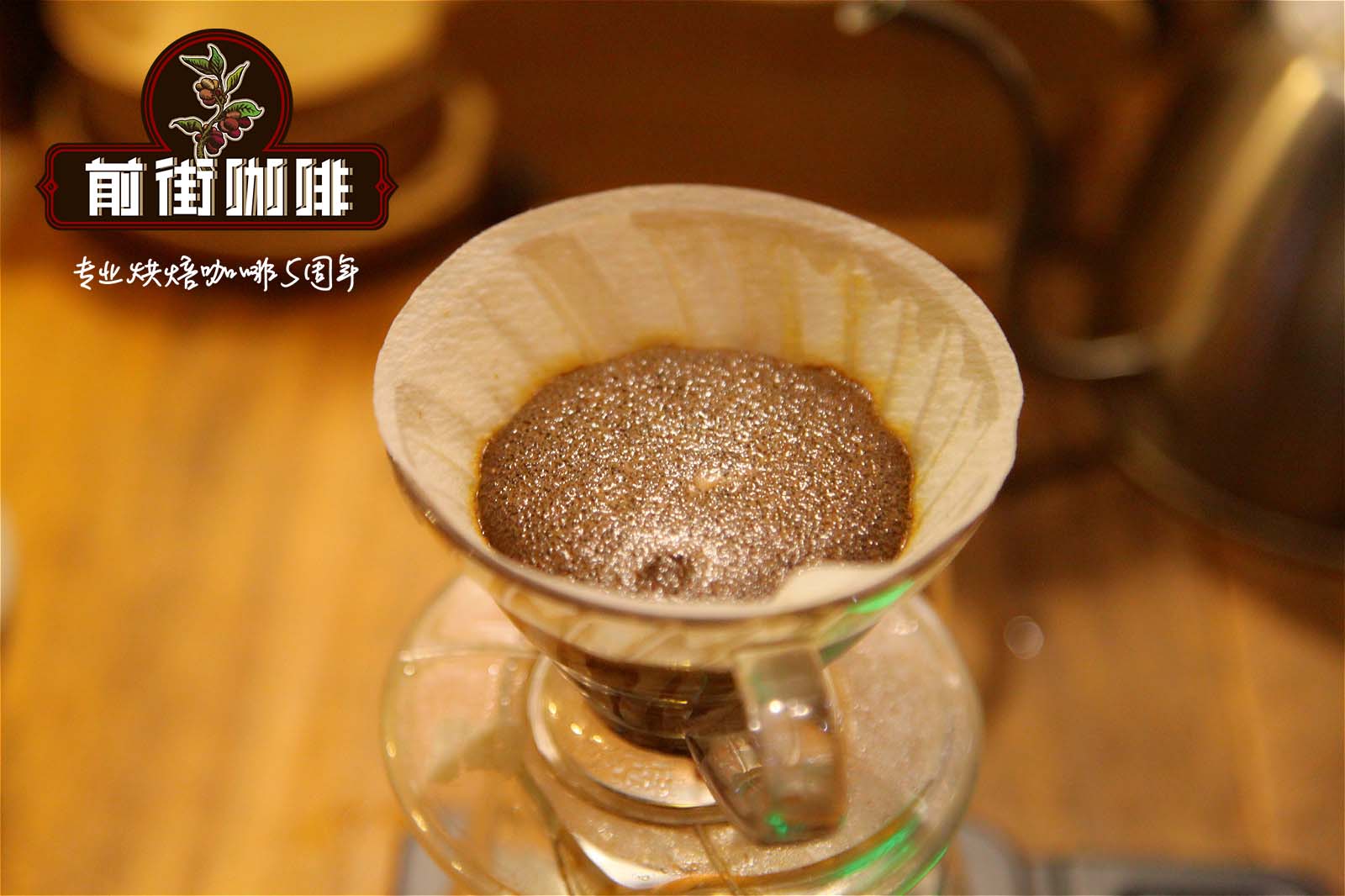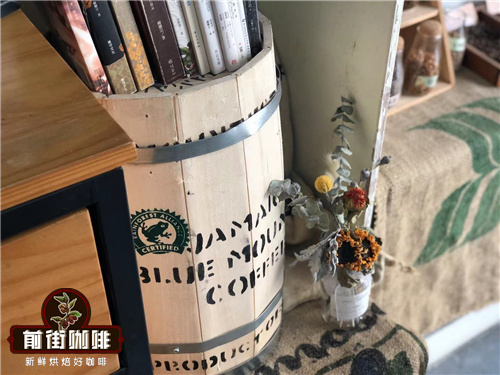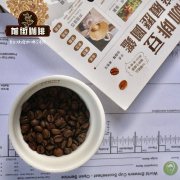Colombian Coffee Bean Story Colombian Coffee beans have excellent flavor but the price is quite close to the people.

Professional coffee knowledge exchange more coffee bean information please follow the coffee workshop (Wechat official account cafe_style)
My coffee trip to Colombia began three years ago when Venezuela moved to Bogota, the capital of Colombia. When I was in Venezuela, I often heard people say, "before Venezuela discovered oil, coffee was much more famous than Colombian coffee." Colombians say it's just Venezuelan nostalgia-after decades of branding, Colombian coffee beans have gained an internationally recognized reputation.
Now, when people talk about the most authentic South American coffee, they probably think of Colombian coffee beans.
Drink coffee like red wine
When I first arrived in Bogota, my first impression of the city was the strong aroma of coffee. On the second floor of the Salit business center, more than a dozen coffee shops gather near the atrium, and the aroma of coffee spreads throughout the space; on the streets of the city, enthusiastic coffee vendors can be seen everywhere, dragging carts and carrying thermos filled with coffee. peddling homemade coffee. Of course, to taste authentic Colombian coffee beans, you have to go deep into the cafes in the old parts of the city.
I live next to the candlestick district in the old city, which was ruled by Spanish colonists before the 19th century and is now a historic reserve and a must for tourists. Many old houses are used as museums, schools, snack shops, restaurants and cafes. The decoration style of each restaurant and cafe here is different, and it is fun to visit different restaurants and cafes every day. It is said that M á rquez often lingered in these exquisite cafes when he was a university student in Bogota in the 1940s, which was the starting point of his writing career.
The staff of the San Alberto Cafe
Among the many cafes near the old city, the one I visit most often is the St. Alberto Cafe below the Gold Museum. Founded in 1939, the Gold Museum is the largest gold museum in the world, with a collection of about 30,000 pieces of exquisite gold objects made by Indians from the 20th century BC to the 16th century AD. It is one of the most popular tourist attractions in Bogota. But most visitors ignore that there is a cafe downstairs that even Colombians admire-the cafe of St. Alberto.
Although famous, the coffee in this shop is not expensive. You can get a cup of coffee for two dollars. The clerk told me that it would take them nearly 20 hours for a mere two dollars. They use the cold drop method to make coffee, which takes the most time and patience. You must first drop cold water into a filter that holds coffee powder, and let the water droplets slowly seep into the coffee powder. Finally, the water completely absorbed the taste of the coffee in the filter and dripped into the coffee pot below. The whole dripping process takes more than 7 hours, and then the cold coffee in the coffee pot has to be refrigerated in the refrigerator for 12 hours.
A cup of red wine coffee made.
In addition to the way it is made, the way of drinking coffee here is also very exquisite. The waiter first took the wine glass out of the refrigerator and carefully wiped it with a paper towel facing the lamp. Put it on the electronic scale, put in two pieces of ice, and finally pour the coffee. I was really flattered by the sight-but it was only two dollars. Why did you have to fight so much? is it to create an atmosphere or to show that it is expensive? After the waiter put the cup in my hand, he told me the answer: this drink is called "a cup of red wine coffee". It needs to be tasted like red wine in order to taste the aroma and mellowness of the coffee. I wiped the fog off the surface of the cup and saw that the coffee was really as crystal clear as red wine.
Bogota's largest coffee chain is not Starbucks, but two local brands, Juan Diz and Omar, which can be found almost everywhere in downtown areas. In addition to selling coffee with various blending methods, they also prepare some western-style snacks. Locals eat less dinner, often with a cup of coffee and bread, so bakeries and cafes are the best places to do business.
Juandiz is the most famous coffee brand in Colombia. In addition to opening a chain of stores, it also sells coffee products and clothing. Perhaps it is because such local coffee shops are so popular that it is difficult for foreign brands such as Starbucks to penetrate the Colombian market. It was not until last year that Starbucks opened its first store in Bogota.
Coffee plantations in the mountains of Colombia
Coffee plantations deep in the mountains
Having tasted authentic Colombian coffee, I would like to know more about the process of growing and producing coffee. In the past, because of the high incidence of social problems, it was difficult for tourists to see pure Colombian coffee bean plantations for the sake of safety. In recent years, as the government has intensified its crackdown on violent organizations, more and more tourists have been able to see coffee plantations deep in the mountains and witness the whole process of coffee production.
Colombian coffee bean plantations are mainly concentrated in the "Coffee Golden Triangle", that is, the triangle formed by three important producing areas, Medellin, Armania and Manizares. The coffee produced here accounts for the largest proportion of the national output and the best quality in Colombia. I came to the Coffee Golden Triangle one morning. When the plane landed in Armania, the misty hills were green, and the morning light covered the green fields with golden tulle. The pick-up driver didn't wait for me to sit down before he flew to the scheduled farm. Along the way through the small towns and fields, filled with the smell of idleness, no speeding cars, no people on the road, livestock are also leisurely, aimlessly wandering, this is life in rural Colombia.
The driver told me that the "Golden Triangle" is actually a valley separated by the Andes from the Ecuadorian border into Colombia and the east-west branch. There is fertile soil formed after volcanic eruptions, with an average annual temperature of about 18 degrees Celsius and annual rainfall of 2000 to 3000 millimeters, making Colombia one of the few countries in the world that can harvest coffee all year round.
In Colombia, almost all coffee plantations are opened along the highlands of the mountains, and we drove into the mountains for a long time to reach our destination, the Agrado Coffee Farm. John, who received me, was a tall and handsome young man who was in charge of technical and management work here. He told me that the word "coffee" comes from the Greek word "Kaweh", which means "strength and passion". He said that although there is no specific record, it is now widely believed that Africa is the hometown of coffee, and when African slaves are sold to places such as Yemen and the Arabian Peninsula, coffee is taken to various places along the way. The history of coffee cultivation in Colombia can be traced back to the Spanish colonial era in the 16th century: some say it came from the island of the Caribbean and by water through El Salvador in Central America; others say that coffee beans were first introduced to Colombia by a priest from the French Antilles via Venezuela.
John took me to the shade of the manor. There, several little girls have prepared tables, chairs, utensils and other equipment, waiting for me to taste the coffee. They use different utensils to brew coffee, and let me taste it and compare it: the traditional filter paper method can taste the soft acidity of coffee; the siphon pot brewing method can more fully understand the characteristics of coffee; and the syringe pressure law squeezes out all the essence of the coffee, making it more mellow. In addition, they also showed me exquisite coffee utensils, as well as skillful coffee art such as washing and ironing cups.
Walking into the coffee plantation, I saw a lush green dotted with bright red coffee beans. John told me that the fruits would be shelled and soaked for another 18 hours after picking. The fruit of good quality will sink into the water, while those floating on the surface will be removed, fermented together with the shell and used as fertilizer. Colombia attaches great importance to environmental protection, and all recyclable materials are never wasted. In the end, the remaining coffee beans have to go through the steps of sun drying, air drying and screening.
Such a complex and delicate process makes the roasted Colombian coffee exudes a light and elegant aroma, which is not as warm and intense as Brazilian coffee, nor sour like African coffee, but a sweet fragrance with gentlemanly elegance and soft and smooth taste, so Colombian coffee is also called "green gold".
Mobile coffee stalls on the streets of Bogota
A place where "cards are not played according to reason".
In her travels, Taiwan's female writer San Mao describes Colombia as a place where "cards are not played according to rules." its citizens are enjoying leisurely coffee hours while experiencing social unrest, and its land is half covered with golden coffee and half with devil-like poppies. According to the time Daily, Colombia's largest media, 93% of the world's heroin is produced on the border between Colombia and Ecuador. The cultivation, processing, trafficking and transshipment of drugs is indeed the biggest headache for the Colombian government.
In 1927, the Government established the Colombian Coffee producers Association. This is a non-profit organization that serves Colombian coffee farmers and is the only official coffee professional guild in Colombia. For more than 80 years, it has protected the cultivation, technical training and financial support of Colombian coffee, as well as the spread of coffee culture, which has not only greatly improved social security, but also created Colombian coffee's reputation in the world. Therefore, it is also considered to be one of the most successful guilds in the world.
A friend who works at the Colombian Coffee producers Association told me that another duty of the association is to strictly control the export of coffee, "as long as the quality does not meet high standards, products are not allowed to be exported." Maybe for Colombians, coffee is a business card of the country.
The role of coffee is already apparent: last year, Colombia was listed as one of the top 10 happiest regions in the world by the British New economy Foundation. Many people don't understand this, but I'm not surprised at all. In my opinion, Colombians do know how to enjoy life very well: the pedestrian street in downtown Bogota is a literary paradise, where juggling and dancing artists can be seen everywhere; in the M á rquez Cultural Center, citizens quietly read the masterpiece "A hundred years of Solitude," while people who are tired of doing business or shopping will have a cup of coffee in the cafe, take a break, and have a chat....
Columbia Coffee Bean Brand recommendation
The Colombian coffee beans baked in front street coffee are fully guaranteed in terms of brand and quality. More importantly, the performance-to-price ratio is extremely high, a box of 227 grams, the price is only 95 yuan. According to the calculation of 15 grams of powder per cup of coffee, a bag of coffee can make 15 cups of coffee, which costs only about 6 yuan per cup, which is recommended by conscience compared to the price sold in cafes for dozens of yuan a cup.
Important Notice :
前街咖啡 FrontStreet Coffee has moved to new addredd:
FrontStreet Coffee Address: 315,Donghua East Road,GuangZhou
Tel:020 38364473
- Prev

Colombia coffee bean processing method hand brewing parameters suggest how much is a cup of Colombia coffee
Professional coffee knowledge exchange More coffee bean information Please pay attention to coffee workshop (Weixin Official Accounts cafe_style) 01| Colombia coffee beans producing area profile Colombia is currently the world's third largest producer of green coffee beans, the largest exporter of washed Arabica coffee beans, but also the world's only one named after the name of the country coffee beans. Colombia Commercial Grade Coffee Green Ex
- Next

Colombian Coffee Bean Brand recommendation-how much is the Colombian Coca Zhuoyue Cup of coffee?
For more information on coffee beans, please follow the Coffee Workshop (Wechat official account cafe_style) [Colombian Coffee Bean Coca Joyo Cup] Micro region: Suri Micro-production area has had bids such as the Cauca Best Cup Cup since 2014, coffee bean competition batches, in addition to our common national-level competitions, such as Panama's B
Related
- Does Rose Summer choose Blue, Green or Red? Detailed explanation of Rose Summer Coffee plots and Classification in Panamanian Jade Manor
- What is the difference between the origin, producing area, processing plant, cooperative and manor of coffee beans?
- How fine does the espresso powder fit? how to grind the espresso?
- Sca coffee roasting degree color card coffee roasting degree 8 roasting color values what do you mean?
- The practice of lattes: how to make lattes at home
- Introduction to Indonesian Fine Coffee beans-- Java Coffee producing area of Indonesian Arabica Coffee
- How much will the flavor of light and medium roasted rose summer be expressed? What baking level is rose summer suitable for?
- Introduction to the characteristics of washing, sun-drying or wet-planing coffee commonly used in Mantenin, Indonesia
- Price characteristics of Arabica Coffee Bean Starbucks introduction to Manning Coffee Bean Taste producing area Variety Manor
- What is the authentic Yega flavor? What are the flavor characteristics of the really excellent Yejasuffi coffee beans?

